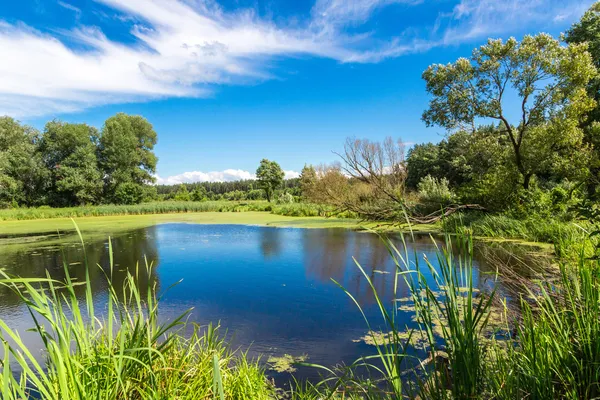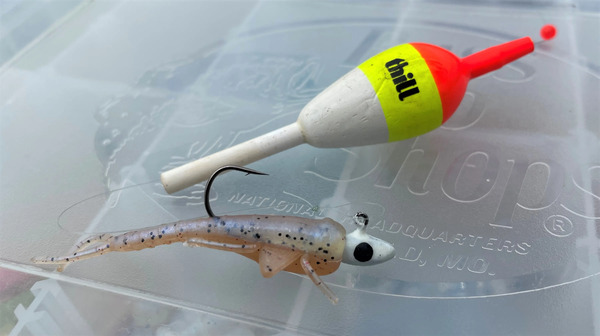Table of Contents
Toggle
The first step to catching crappie is finding them. Us pond fisherman don’t have the fancy fish finders and technology that allow guys to pin point crappie on big lakes.
So we really need to know how to find crappie in a pond to have successful fishing trips.
Ponds typically have very simple and easy layouts. They are usually a round or square shape wish shallow water all throughout.
This means that there aren’t any major ledges, drop offs, or deep pools. Small ponds are usually just like a giant puddle.

This simplicity plays two roles when trying to locate crappie.
First, it means that crappie will be very spread out.
Since there aren’t major structural landmarks, crappie just swim around in open water looking for forage, rather than grouping up on points or ledges.
Second, crappie can be found very close the bank. The water depth usually maxes out 10-15 feet off of the bank.
So there is no reason for crappie to hold out in the middle of the pond, even during the winter.
This is a big advantage for bank fisherman, because there are always crappie within casting distance.
Although ponds have very simple layouts, they usually have at least some cover.
A fallen tree, grass, or some rocks. Where there is cover, there will always be crappie that can be found on or near it.
There will usually be some visible cover that is easy to target, but the submerged structure will be much harder to find.
The good news is that even if you can’t locate cover, there will still be many crappie that are spread out all throughout the pond.
Both black crappie and white crappie are not as aggressive hunters as bass, pike, or other sport fish.
You often have to fish a bit slower to get the to bite.
This is especially important when it comes to locating crappie.
If you are fishing too fast, like when using a beetle spin, you might be fishing exactly where the crappie are, and you just aren’t giving them time to bite.
Fishing slow moving baits can be tedious when trying to locate crappie.
It feels like you are might wasting time slowly working your bait when there might not even be crappie there.
But it is essential to slow it down so that you make sure you don’t fish right through potential catches.
Any time you are bank fishing, fan casting is the best way to find fish.
Since you don’t know exactly where the crappie are, you need to fish as much water as possible.
Fan casting is the best way to do this and ensures that you don’t pass by crappie without getting your bait in front of them.
Fan casting will also give you a good idea of how far off the bank the crappie are holding.
Once you start getting some bites at a certain distance, you know that is the distance off the shoreline where you should focus your casts.
The biggest mistake I see bank and pond fisherman make is that they stay in one place far too long.
Fish are not constantly moving or swimming around the pond.
I you have been fishing in the same spot for a 4-5 minutes and haven’t caught anything, keep it moving.
Crappie aren’t going to migrate into your spot. Just do one set of fan casting and then move to 15-20 feet to the side.
Repeat this until you start getting some bites.

Crappie are well known to be schooling fish. The saying is that if you can find one, there are a bunch of others with it.
But do crappie still school in small ponds. I have found that crappie don’t really school up in ponds.
Of course, you can often find a bunch of crappie on a specific piece of cover. But that is not schooling.
I have found that in open water, pond crappie are very spread out and don’t tend to hold together tightly.
The problem with this is that if you catch one or two crappie, those might be the only ones in that spot.
But the advantage is that you can catch keep catching crappie as you move along, rather than needing to find big schools.
The slip bobber rig is definitely the best setup for finding crappie in ponds.
The slip bobber allows you to suspend a jig in ones spot while fishing it slowly.
You can also adjust the depth of the jig very quickly and easily. This way, you can find out what depth the crappie are at my dropping or raising your jig.
I also like the drop shot rig for crappie fishing in deeper water.

If you really want to speed things up and take it to another level, add a second jig to your slip bobber rig.
This way, you can fish two depths at once and make sure you aren’t fishing your jig above or below the crappie.
Pond Layout: Ponds have simple layouts with shallow water and limited structural features, making crappie spread out and often found close to the bank.
Targeting Cover: Look for visible and submerged cover as crappie tend to be near or on it, but even without visible cover, crappie can still be found throughout the pond.
Fishing Speed: Crappie are not aggressive hunters, so fishing slowly with patience is crucial to ensure they have time to bite.
Fan Casting: When bank fishing, fan casting helps cover more water and provides insights into the distance at which crappie are holding.
Mobility: Avoid staying in one spot for too long; if no bites occur after a few minutes, move around to explore different areas and increase chances of finding crappie.
Schooling Behavior: While crappie may not tightly school in ponds, they can still be plentiful, offering continuous catches as you move along.
Best Rig and Lure: The slip bobber rig is highly effective for pond crappie fishing, allowing for easy depth adjustment. Consider using a double crappie jig setup for added versatility and coverage of different depths simultaneously.
Finding crappie in a pond may seem daunting due to the simplicity of the layout, but with the right techniques and understanding of their behavior, it becomes an enjoyable and rewarding pursuit.
The key points to keep in mind are the spread-out nature of crappie in ponds, the importance of targeting cover, the need to fish slowly, employing fan casting for thorough coverage, and being mobile to explore different areas effectively.
While crappie in ponds may not school tightly, their presence can still be abundant, offering continuous opportunities for anglers.
